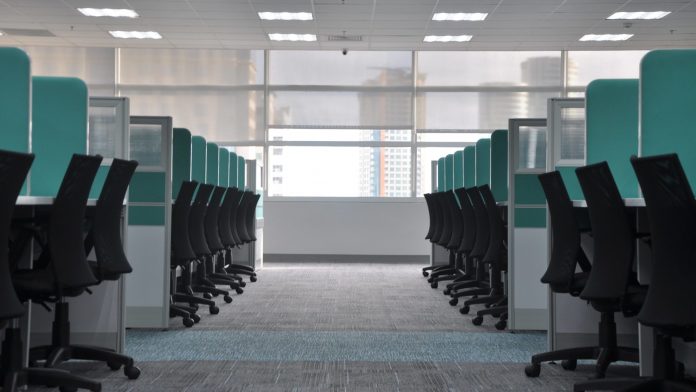As restrictions slowly lift and people begin returning to work, it’s not going to be business as usual. There are many things to consider regarding workplace and employee safety that business owners have never faced before. Getting the economy rolling again is at the forefront of everyone’s minds, but there needs to be additional safety measures in place. Business owners will need to establish new policies and procedures which take into account employee safety.
To develop these policies, the best thing to do is to apply the efforts that people are making personally and adapt them to an office environment. The virus spreads through contact and respiratory fluids, so businesses need to take steps to mitigate those risks. Here are some of the ways that you can make your office safe upon return to work.
1. Make your office secure
To control the number of people your staff is in contact with, you need to ensure your office is secure. You will need to have control over who is in the office at all times, and how many people in total. Regulating these numbers is easiest by having controlled access in your office, whether that’s a secure keypad entrance or giving staff designated keycards. That way, you can track everyone coming in and out of the office and help mitigate the risks of viral transmission.
As people slowly return to work, it’s unlikely you will have all your staff back in one full sweep. You may not have the space to have all the staff working in-office due to new guidelines, and therefore, you will likely only allow access to a limited number of staff. Remsdaq offers tons of Remsdaq access control options such as controlled door access, including biometrics access, key card or keypad options.
2. Maintain distance
The government has recommended that everyone keep a 6-foot gap between each other to reduce the chance of spreading the virus. You will need to set up the office effectively to be able to adhere to those guidelines and put policies in place that require staff to stick to the instructions. Some offices may have the space to spread out workstations to maintain 6 feet between them. Ideally, cubicles should be installed to provide a protective barrier between staff while they work.
If your office configuration has staff working at tables in a group station, you’ll need to allow adequate room for them to space themselves out. Avoid any type of face-to-face configurations. If there physically isn’t space, then you may want to have some staff continue to work remotely for the time being.
3. Be strict on cleanliness
While keeping distance is important, your staff will inevitably be in contact with various surfaces throughout your office. The bathroom, kitchen and other common areas will experience traffic from all your staff, and therefore cleanliness will need to be a top priority. Have all staff members thoroughly disinfect and clean their workstation every day before they leave. Make sure to stock a high-grade disinfectant or make a solution of bleach and water to cleanse hands and surfaces. If you do use bleach, just make sure not to use more than recommended as it can be harsh on the skin. Hydrogen peroxide is also an effective killer of bacteria, and you can use it as an effective solution when mixed with water as well.
4. Wear masks
When creating new company policies around COVID restrictions, it’s essential to include the use of masks. Whenever employees are commuting to and from work and moving around the office, they should be wearing a mask. At least for now. When they are in their personal workspace, it is appropriate that they are able to remove their mask. That said, whenever there will be close contact with others, or they venture into a colleague’s workspace, masks should be required to keep themselves and others safe.
5. Reduce physical contact
Encourage your staff to avoid meeting face-to-face with clients or other staff whenever possible. They should aim to email, text or call first, and if they do need to meet in-person, they must avoid shaking hands.
Common areas in your office, such as a breakroom, should be restructured to ensure staff can sit a safe distance away from others. You may need to remove tables and chairs and reduce the capacity, potentially staggering breaks so the room can accommodate people at intervals. That said, you’ll need to ensure the surfaces are clean between each group of staff. If possible, you may consider closing down the break room entirely as having staff eat lunch at their desk, or outside.

